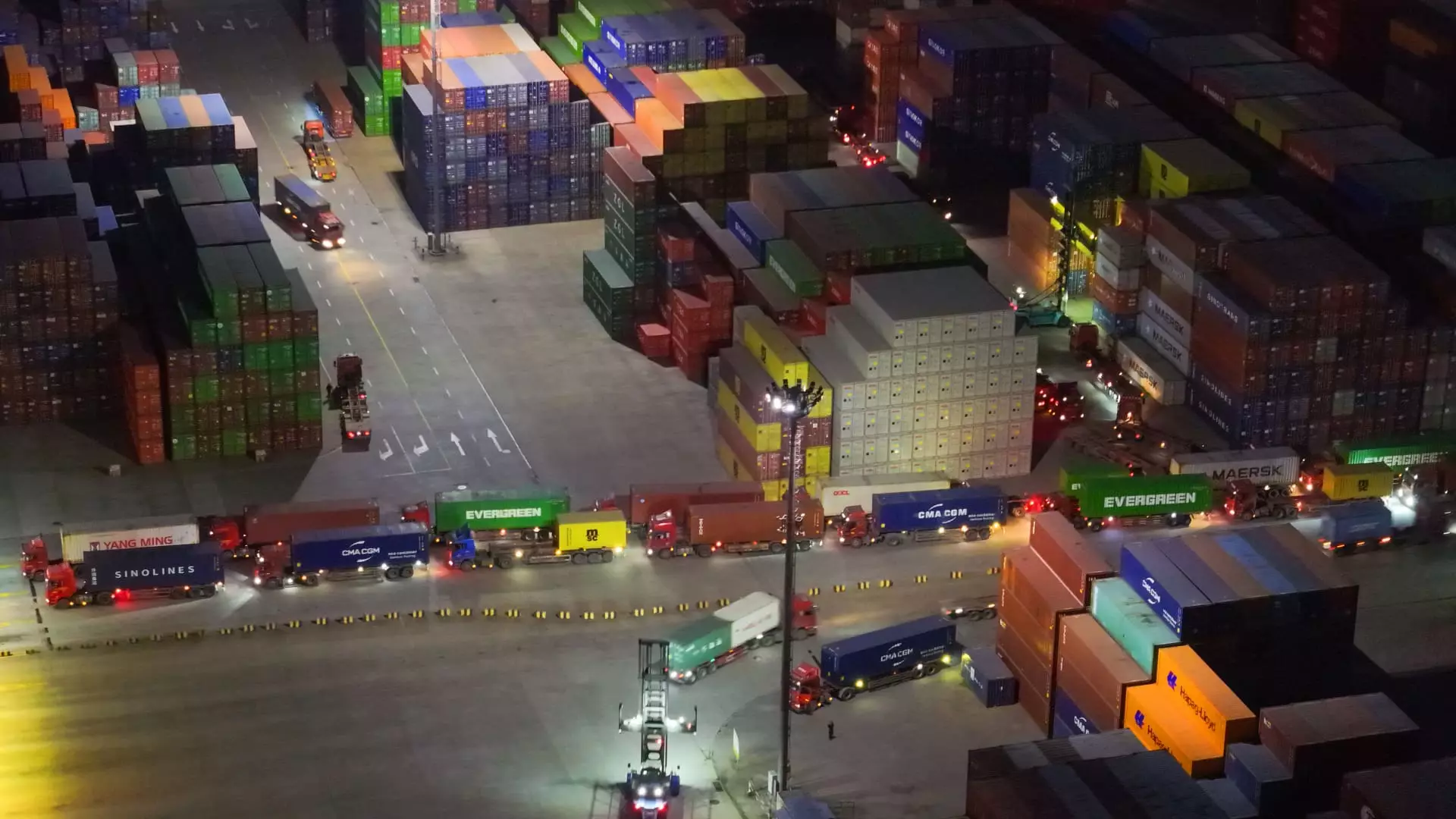In a turbulent world where trade deals once seemed a bastion of diplomacy, the escalating trade war between the United States and China has turned even seasoned economists into pessimists. Recent actions, such as the alarming increase of U.S. tariffs on Chinese goods—more than doubling in just a week—signal a grim future not only for China but for the global economy at large. Major financial institutions, including Citi, have adjusted their growth forecasts for China, now projecting a stark 4.2% GDP growth this year, a significant drop from prior predictions. This downward revision is a haunting reflection of prevailing pessimism among analysts who believe the door to a feasible compromise between titans of trade has all but closed.
Amidst this escalating strain, the stakes are ridiculously high. The World Trade Organization has warned that such conflict can lead to widespread economic downturns—impacting jobs and markets not just in China and the U.S., but throughout various interconnected economies. The irony is that these tit-for-tat tariffs come under the guise of nationalism but ultimately unearth countless layers of complexities that threaten the foundation of international economic cooperation.
China’s Vulnerability Revealed
Economists had hoped for years that a robust trade agreement would shield China’s economy from the vulnerabilities exposed by external pressures. However, recent statistics show that Chinese exports are now projected to plummet by 2% in 2025, a startling retreat that cuts deeper than previously anticipated. With more than three percentage points of China’s GDP reliant on exports to the United States, one can’t help but wonder if the dragon that once roared with economic might is slowly gasping for breath.
After all, when U.S. tariffs raised their ugly heads, they dragged along the manufacturing sector, which is now feeling the weight of diminishing demand. The consequence is a cascading effect on investments, affecting everything from technology development to everyday consumer goods. With an economy that has relied heavily on exports for growth, China’s limited capacity for redirecting supply chains to offset these losses looms ominously, raising serious concerns.
The Political Calculus Behind Economic Decisions
What’s fascinating—yet troubling—is the political calculus underlying these economic shifts. As the economic landscape grows bleaker, Beijing has signaled a troubling readiness to adopt aggressive measures, such as cutting interest rates or boosting fiscal spending, as if these were magical panaceas that could easily remedy the chokehold of tariffs. The notion that policy adjustments can somehow shield the economy from the immediate consequences of trade hostility demonstrates a dangerous underestimation of the ripple effects of this conflict.
Moreover, the viewpoint emerging from Beijing seems to show a willingness to absorb some economic costs in pursuit of greater strategic gains. The contention that retaliation could prove more beneficial than the repercussions of loss stands at odds with the common idea that economic cooperation breeds a more stable geopolitical climate. Rather, this retaliatory attitude is fueled by a toxic blend of nationalism and strategic posturing that can enrich the narrative but could weaken the ground reality.
Trading Stability for Escalation
As organizations such as Goldman Sachs predicted, tariffs could slice as much as 1.5 percentage points off China’s economy. Yet the neglect for such warnings reveals a dangerous tendency in modern geopolitical maneuvers—where the allure of economic strength is traded for escalating conflict. Behind the walls of towering banks and analytical firms, the stark realization is hitting hard: the future of economic forecasts is now plagued with uncertainty.
Such disarray leads to a critical question: at what cost does economic pride and political maneuvering come? It’s imprudent to ignore the underlying reality that every decision made, whether by governmental entities or economic institutions, leaves implications for millions. From factory workers in Guangdong to tech innovators in Shenzhen, the ramifications of policy reflect a crisis that can no longer be addressed merely through tweaked GDP numbers.
Is Optimism a Fool’s Errand?
The landscape has never been murkier. With China’s credible GDP reports scheduled for the approaching months, one must brace for what could reveal a deeper malaise than previously believed. Amidst such adversity, optimism may seem an alluring yet foolhardy exercise. The path that lies ahead demands strategic recalibration and a deviation from cycles of retaliation, finding new ground for negotiation in an age of heightened self-interest.
Ultimately, the path the global economy is currently walking is a treacherous one, lined with volatility and unpredictable outcomes. The closing window for meaningful dialogue between the U.S. and China is a reminder that economic interests intertwined with national pride do little to secure prosperity; rather, they jeopardize fragile economies caught in the crossfire. The question now is whether both nations can navigate this tempestuous seas where trade war could lead to an economic iceberg lurking just beneath the surface.

